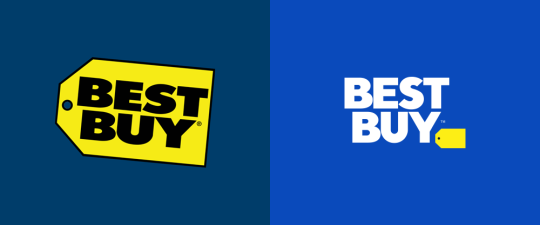
Last week, Best Buy launched
a branding refresh, including an updated Best Buy logo, a
new look and feel with updated colors, photography and conversational language
and a new tagline: “Let’s talk about what’s possible.” New commercials and
digital videos highlighting the experience debuted May 13.
The rebranding comes after the retailer completed a
significant turnaround, having bolstered its stock price more than 500% since
Dec. 2012. Both shoppers and analysts credit the success to improved in-store
customer service, Geek Squad services, a revamped e-Commerce site, price
matching and smart home services.
The RTP team
shares their thoughts on the Best Buy rebranding and whether other retailers
should take similar approaches as the industry continues to evolve.
Debbie Hauss,
Editor-in-Chief: I applaud Best Buy for its
turnaround efforts and hyper-focus on the demands of today’s shoppers. To me,
the logo is just the icing on the cake. I think the company’s CMO outlined the
approach that is helping the company succeed when other traditional
brick-and-mortar retailers are failing: “Telling the story of our people —
and how we make a meaningful impact on customers’ lives — is at the heart
of this work,” said CMO Whit Alexander in a company report. “Our people
are our insurmountable advantage.” Best Buy is embracing storytelling, a focus
on people internally, and building stronger relationships with shoppers.
Adam Blair, Executive
Editor: Best Buy received praise for its turnaround efforts from
the Wall
Street analysts who spoke at the 2018 Retail Innovation Conference,
and the retailer’s rebranding seems like another move that’s worthy of
applause. First, it’s being done after the company has already
made positive strides, so it doesn’t read like a desperate
attempt to put lipstick on a pig. It maintains a connection with the past by
minimizing (but not eliminating) the price tag element of the logo. And
its new
commercials emphasize Best Buy’s (and omnichannel
retail’s) biggest strength: the face-to-face relationships that allow the
company’s Blue Shirts and Geek Squad to gently guide customers through a
complicated consumer electronics purchase journey.
Marie Griffin,
Managing Editor: As the demise of Sports Authority and Toys ‘R’ Us shows, it’s not easy to
survive as a big-box specialty retailer in the age of Amazon. Best Buy
deserves credit for successfully remaining relevant in brick-and-mortar retail
despite unprecedented challenges. However, Best Buy’s “new” marketing
approach looks like an homage to the past rather than an accelerant for its
future. By featuring actor-customers from Gen X and older generations in
its commercial — in black-and-white, no less
— Best Buy is reinforcing the idea that it is a place for the
unsophisticated parents and grandparents of Millennials and Gen Z, but
definitely not for savvy digital natives. Since we haven’t seen
everything Best Buy has in store, I can only hope that
subsequent advertising and marketing will double down on the reasons younger
consumers should not think of Best Buy as their grandmother’s
tech guru.
Glenn Taylor, Senior
Editor: Best Buy’s “New Blue” growth approach and people-first mantra is
clearly paying dividends for the brand, so I certainly applaud them for such a
radical turnaround given their positioning five years ago. However, I feel like
the logo change wasn’t necessary to reflect the changes. I don’t even think the
logo change itself is a poor visual, but I’ve seen other retailers such as eBay and JOANN change logos to simpler fonts, and they don’t really elicit a
response from me. If anything, companies tend to subject themselves to outside
jokes with these changes, with Best
Buy now being inevitably compared to Bud Light. I feel there is something
to say though about the rebranding in general, particularly Best Buy’s new
conversational tone of advertising. I think it fits very well with the
customer-centric goal that every retailer is aiming for. People want to know
that their favorite retailers care about them, and any way to instill that kind
of confidence in the shopper will certainly benefit the brand.
Bryan Wassel,
Associate Editor: De-emphasizing the price tag in Best Buy’s logo makes
sense in a world where physical price tags feel increasingly outdated, and certainly
for a chain where the draw is as much about the experience as the product. It’s
a simple, plain logo for a retailer that has found success by taking
traditionally stressful shopping journeys and providing experts to ease
customer concerns, whether purchasing a new phone or having your tablet
repaired. The Best Buy of today is not the same company as
the Best Buy of 15 years ago, and the updated logo gives
shoppers the freedom to form new connections in their minds without completely
severing their memories of what it once was.






